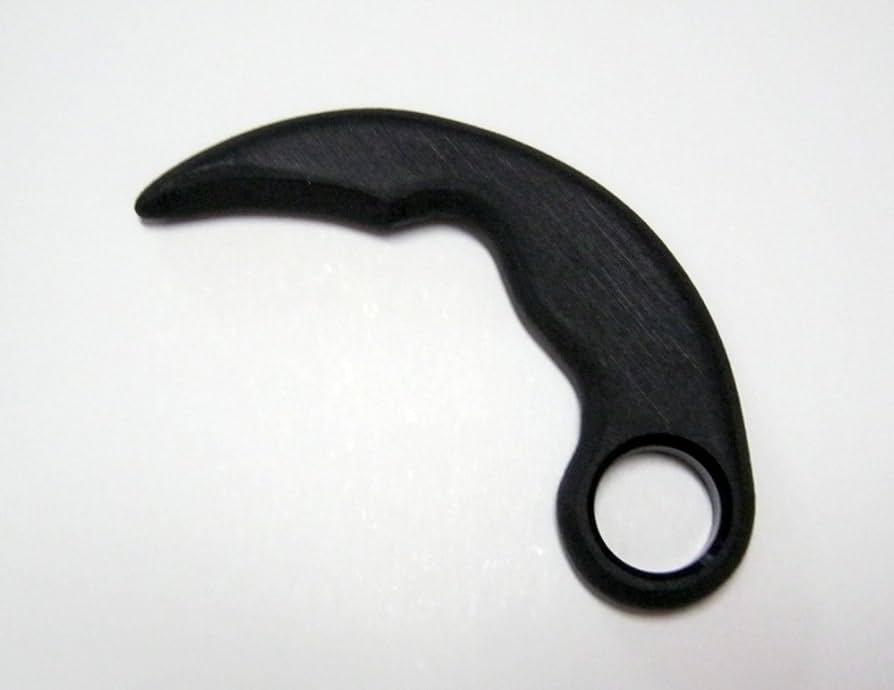Are You Training for the Street or Just the Studio?
In an unpredictable world where threats can emerge in tight alleys, parking lots, or even your own home, self-defense training has never been more vital. While many martial artists focus on punches and grappling, knife defense remains one of the most realistic and necessary skills to develop.
Enter: Silate training knives — a powerful, safe, and effective tool to sharpen your self-defense training.
Whether you’re an experienced martial artist or someone simply seeking real-world readiness, this guide will show why Silate training knives are more than just training props — they’re essential weapons in your self-defense toolkit.
What Are Silate Training Knives?
Silate training knives are safe, practice versions of traditional blades used in Silat — a Southeast Asian martial art practiced widely in Indonesia, Malaysia, and parts of the Philippines. Silat is known for its brutal efficiency, deceptive movements, and strong emphasis on edged weapons.
These training knives replicate iconic blade shapes like the Karambit or Kris, and are made of materials like:
• Rubber or high-impact polymer for partner drills and sparring
• Wood for flow and technique work
• Dull aluminum for realistic weight and handling
They’re specifically designed to train safely and simulate knife encounters under real-world conditions — without the lethal consequences.
Why Train With Silate Knives for Self-Defense?
Are You Really Prepared for a Knife Attack?
Most street altercations involving weapons happen up close — and often include bladed weapons. It’s not a matter of if you’ll face one, but how you’ll respond if you do.
Here’s how Silate training knives can elevate your preparedness:
1. Realism Without the Risk
Training with a Silate training knife gives you a realistic understanding of knife behavior — including how quickly an attacker can close the gap, how awkward it feels to control a blade, and how deceptive small movements can be.
• Practice full-speed attacks and defenses
• Learn angles of attack (slashes, thrusts, cuts)
• Safely train counters, locks, and disarms
2. Build Defensive Reflexes
Repetition is key. When you train with a knife in hand, your nervous system develops the ability to:
• Recognize threatening movements
• React instantly to sudden lunges or thrusts
• Execute counter-techniques under pressure
This kind of reflex conditioning is impossible to develop through theory alone.
3. Mental Conditioning Under Pressure
Let’s be honest — facing a knife attack is terrifying. Training with Silate training knives helps simulate the psychological pressure of dealing with bladed threats.
You’ll learn how to:
• Keep calm during chaotic motion
• Make quick decisions under adrenaline
• Understand the consequences of hesitation
Bonus: Cross-Training with Pilipino Training Knives
While Silat provides a deep foundation in knife work, Pilipino training knives offer additional advantages from Filipino Martial Arts (FMA) like Kali and Arnis.
Why integrate Pilipino training knives?
• They teach angle-based systems that complement Silat’s deceptive entries
• Focus on weapon-to-weapon and weapon-to-empty hand transitions
• Offer a wide variety of blade types (Barong, Balisong, Ginunting)
Combining Silate and Pilipino training knives in your self-defense training broadens your tactical awareness and gives you more tools for unpredictable real-life encounters.
Key Benefits of Silate Training Knives for Self-Defense
Here’s a quick summary of what makes Silate training knives essential for street-ready self-defense:
Authentic Motion Patterns
Learn how curved blades like the Karambit behave — and how to respond effectively.
Deception and Angles
Silat teaches off-angle attacks and hidden blade entries — perfect for simulating surprise encounters.
Improvised Defense
Use your knife, environment, or even clothing for traps, locks, or blinds — techniques that Silate training drills often include.
Flow and Adaptability
Silate movements teach you to flow, helping you adapt mid-conflict — an essential skill in real-world encounters.
How to Use Silate Training Knives in Your Self-Defense Routine
Ready to train smarter and safer? Here’s how to get started:
1. Start Solo with Shadow Drills
Get comfortable moving with your training knife. Practice basic slashes, thrusts, and entries.
2. Add a Partner for Reaction Drills
Simulate different attack angles and pressure-test your responses using rubber or padded blades.
3. Layer in Scenario Training
Set up simulations: muggings, home invasions, bar fights. Practice under stress with fast movement and unexpected variables.
4. Switch Between Knife and Empty Hand
Train realistic transitions — the attacker may have a blade, but you may not. Learn to disarm and control.
Choosing the Right Silate Training Knife
Not all training knives are created equal. Consider the following:
Material
• Rubber/polymer for sparring
• Wood for flow
• Aluminum for realism
Shape
• Karambit: Curved, used in many Silat systems
• Straight blades: Good for thrusting drills
• Combine with Pilipino training knives to practice a range of blade styles
Safety
• Rounded edges
• Comfortable grip
• Durable under repeated impact
Conclusion
When it comes to self-defense, few tools offer the versatility, realism, and cultural depth that Silate training knives do. They provide a safe, effective way to prepare for real-world threats — far beyond what traditional martial arts drills offer.
Training with Silate training knives helps you:
• Build reflexes under pressure
• Understand blade behavior
• Simulate real-world knife threats
• Train mental focus and physical control
And when paired with Pilipino training knives, your practice becomes even richer — blending precision, cultural knowledge, and functional self-defense into one sharp package.
So the real question is:
Are you just learning to move — or learning to survive?
If your goal is true readiness, then Silate training knives aren’t optional — they’re essential.
